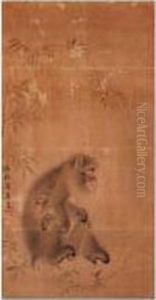Mori Shuho Paintings
Mori Shuho was a Japanese painter, born in 1738 in Kyoto, Japan. He is known for his contributions to the Maruyama-Shijo school of painting, a style that combined the realism of the Maruyama school with the literati influences of the Shijo school. Shuho was the younger brother of the more famous Maruyama Okyo, who was the founder of the Maruyama school.
Shuho's works are characterized by their delicate brushwork and refined use of color. He primarily painted kachō-ga (flower-and-bird paintings), landscapes, and portraits of beautiful women. Like his brother, Shuho was influenced by Western artistic techniques such as linear perspective and shading, which he integrated with traditional Japanese painting methods.
Despite living in the shadow of his brother's fame, Shuho developed his distinct artistic style. He was less concerned with realism than Okyo and often leaned towards a more poetic and suggestive representation of nature and beauty. His paintings often evoke a sense of serenity and are marked by a gentle elegance.
Mori Shuho's influence extended beyond his lifetime, as he contributed to the development of the Shijo school, which would later influence many other artists. He passed away in 1823, leaving behind a legacy that is appreciated in Japanese art history for its unique blend of East and West, and the subtle beauty of its expression.
